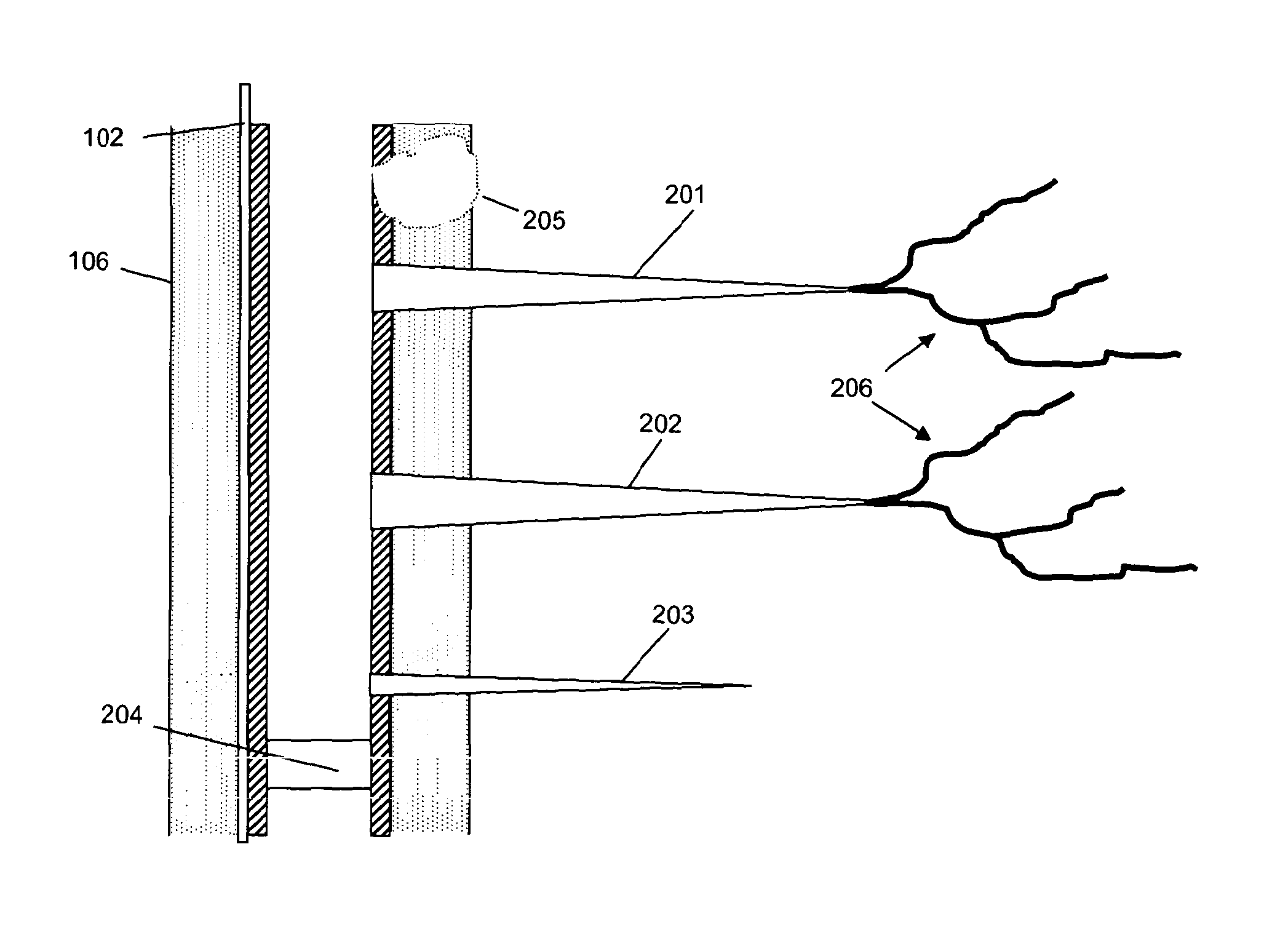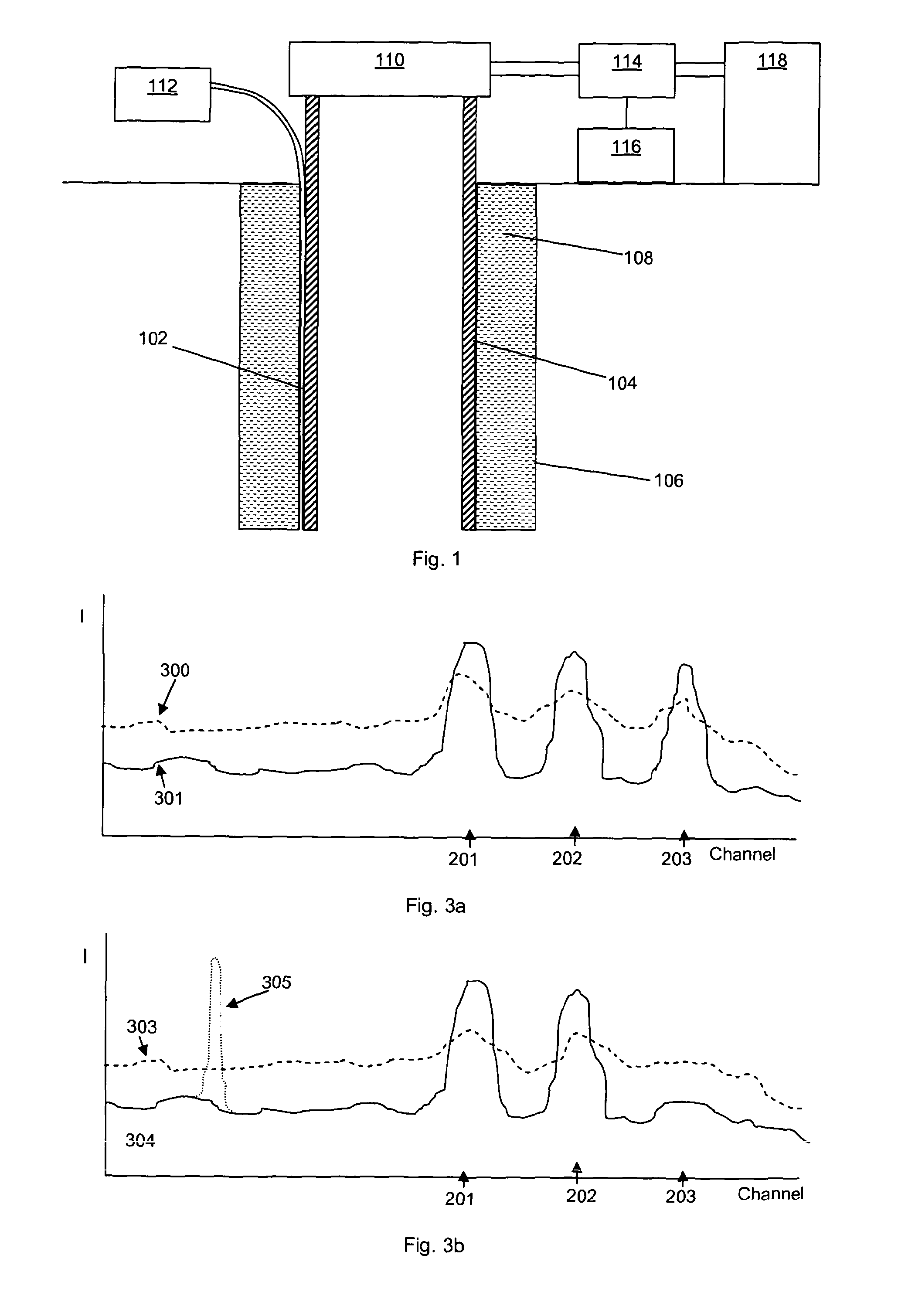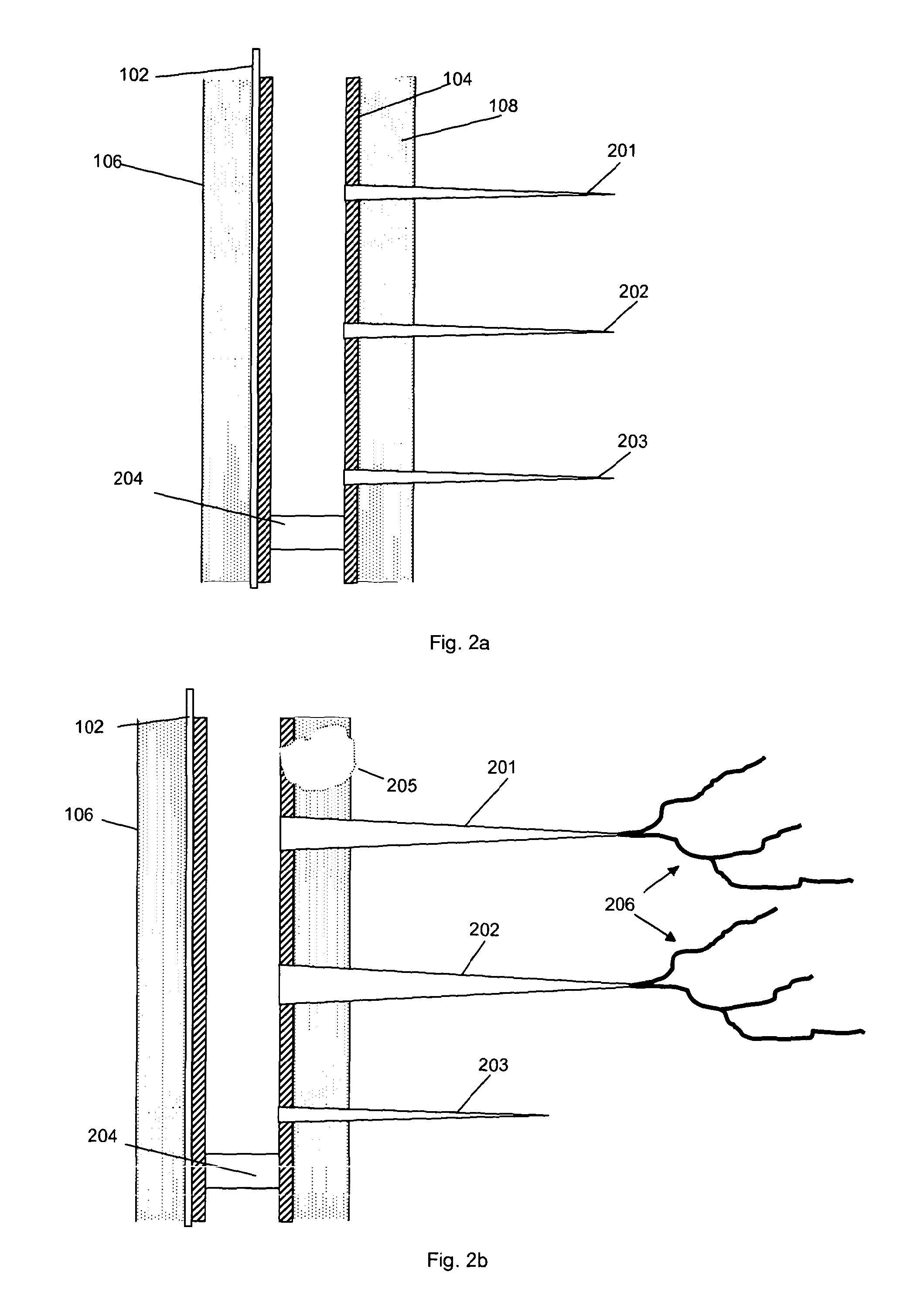Fracture characterization
a technology of fracturing and characterization, which is applied in the field of monitoring and characterising fracturing, can solve the problems of difficult control and monitoring of the fracture process, fracturing of the rock, and the washout of proppant, so as to achieve the effect of significantly reducing the amount of proppant required
- Summary
- Abstract
- Description
- Claims
- Application Information
AI Technical Summary
Benefits of technology
Problems solved by technology
Method used
Image
Examples
Embodiment Construction
[0051]In typical well formation for many oil and gas wells, a well bore is drilled and then a metal casing is forced down the borehole with sections of casing being joined to one another. Once the casing is in place the outside of the casing is filled with cement, at least to a certain well depth, to effectively the seal the casing from the surrounding rock and ensure that the only flow path is through the casing. Once the cement has cured the well may be perforated by lowering a ‘gun’ which comprises one or more shaped charges to a desired depth of the well bore. The gun may be oriented, for example be using a magnetic anomaly detector to position the gun with respect to a feature on the casing, and the shaped charge(s) detonated to perforate the casing, cement backing and the rock formation.
[0052]After perforation, the perforation charge string is removed and a mixture of fluid, such as water, and a solid proppant, such as sand, is forced down the well at high pressure to fracture...
PUM
 Login to View More
Login to View More Abstract
Description
Claims
Application Information
 Login to View More
Login to View More - R&D
- Intellectual Property
- Life Sciences
- Materials
- Tech Scout
- Unparalleled Data Quality
- Higher Quality Content
- 60% Fewer Hallucinations
Browse by: Latest US Patents, China's latest patents, Technical Efficacy Thesaurus, Application Domain, Technology Topic, Popular Technical Reports.
© 2025 PatSnap. All rights reserved.Legal|Privacy policy|Modern Slavery Act Transparency Statement|Sitemap|About US| Contact US: help@patsnap.com



